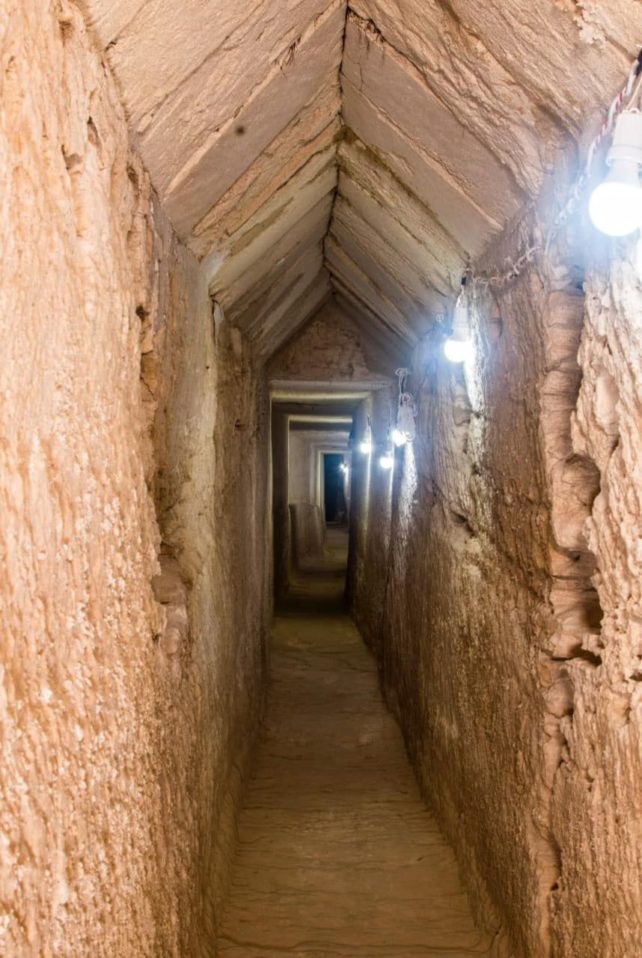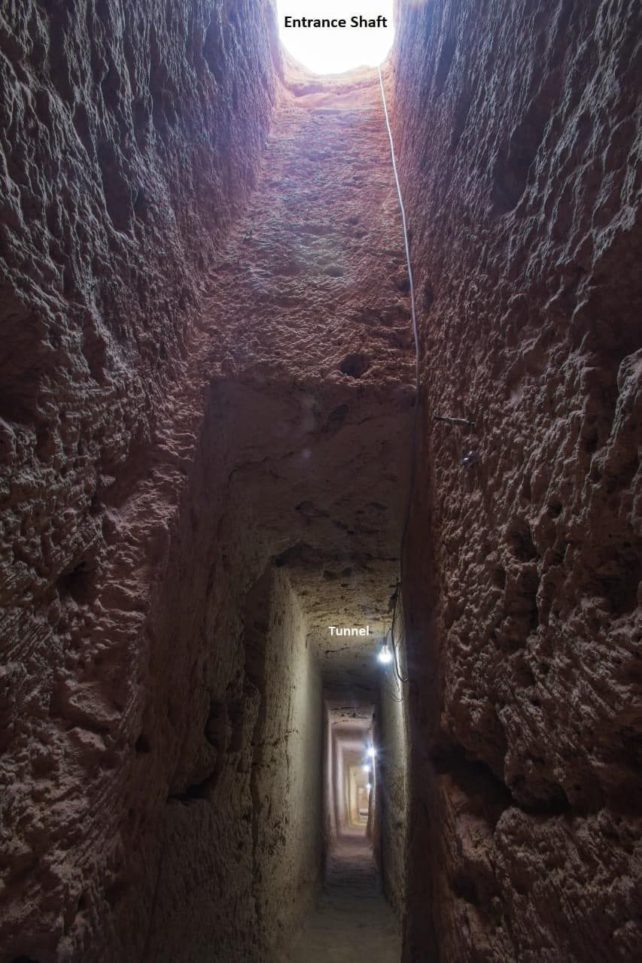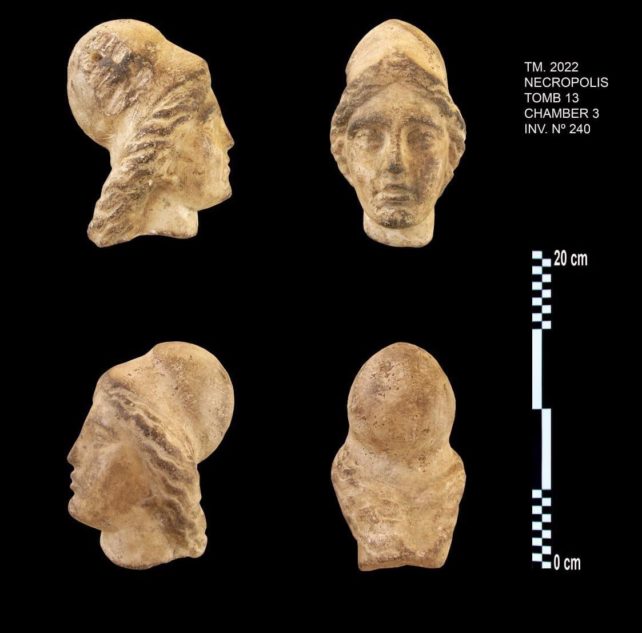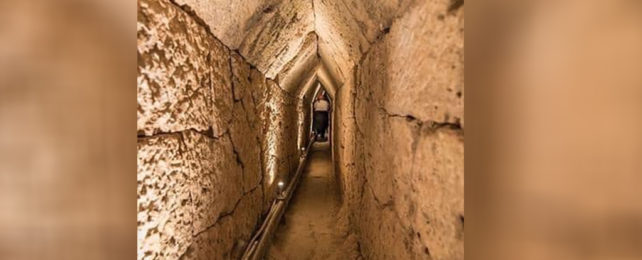Underneath a temple in the ancient ruined city of Taposiris Magna on the Egyptian coast, archaeologists discovered a vast, spectacular tunnel in 2022, a tunnel that experts called a "geometric miracle".
During ongoing excavations and exploration of the temple, Kathleen Martinez of the University of Santo Domingo in the Dominican Republic and colleagues uncovered the structure 13 meters (43 feet) below the ground. The 2-meter tall tunnel had been hewn through an incredible 1,305 meters (4,281 feet) of sandstone.
Its design, according to a November 2022 statement by the Egyptian Ministry of Tourism and Antiquities, is remarkably similar to the 1,036-meter Tunnel of Eupalinos – a 6th-century BCE aqueduct on the Greek island of Samos. Often referred to as a marvel of engineering, the conduit was unprecedented in design and construction in its day.
While the Taposiris Magna tunnel isn't without equal, its engineering is nonetheless just as impressive.

Parts of the Taposiris Magna tunnel are submerged in water, though putting aside its resemblance to the Eupalinos Tunnel, its purpose is currently unknown.
Martinez, who has worked in Taposiris Magna since 2004 in search of the lost tomb of Cleopatra VII, believes that the tunnel could be a promising lead. Previously, the excavations have yielded clues that seem to point to the famous queen and the last of the Ptolemies.
Taposiris Magna was founded around 280 BCE by Ptolemy II, the son of Alexander the Great's renowned general and one of Cleopatra's forebears (she herself ruled from 51 BCE until her death by suicide in 30 BCE).
The temple, the team believes, was dedicated to the god Osiris and his queen, the goddess Isis – the deity with whom Cleopatra courted a strong association. Coins bearing the names and likenesses of Cleopatra and Alexander the Great have been found there, as well as figurines of Isis.

Burial shafts containing Greco-Roman burials have also been found in the temple. It's possible that – if they're to be found there at all – Cleopatra and her husband Mark Antony may have been interred in similar tombs.
Researchers weren't sure if the tunnel could lead to these long-lost tombs, but future work could yield more information.
The next stage will be exploring the nearby Mediterranean Sea. Between 320 and 1303 CE, a series of earthquakes hit the coast, causing part of the temple to collapse and be swallowed by the waves. In addition, excavations had previously revealed a network of tunnels stretching from Lake Mariout to the Mediterranean.

Whether or not the tombs are found, a thorough excavation of these ruins could tell us more about the mysterious ancient city. The tunnel has already yielded some treasures: pieces of pottery and a rectangular block of limestone.
As the then-Minister for Antiquities Zahi Hawass said 13 years ago, "If we discover the tomb of Cleopatra and Mark Antony, it will be the most important discovery of the 21st century. If we did not discover the tomb of Cleopatra and Mark Antony, we made major discoveries here, inside the temple and outside the temple."
A version of this article was first published in November 2022.
